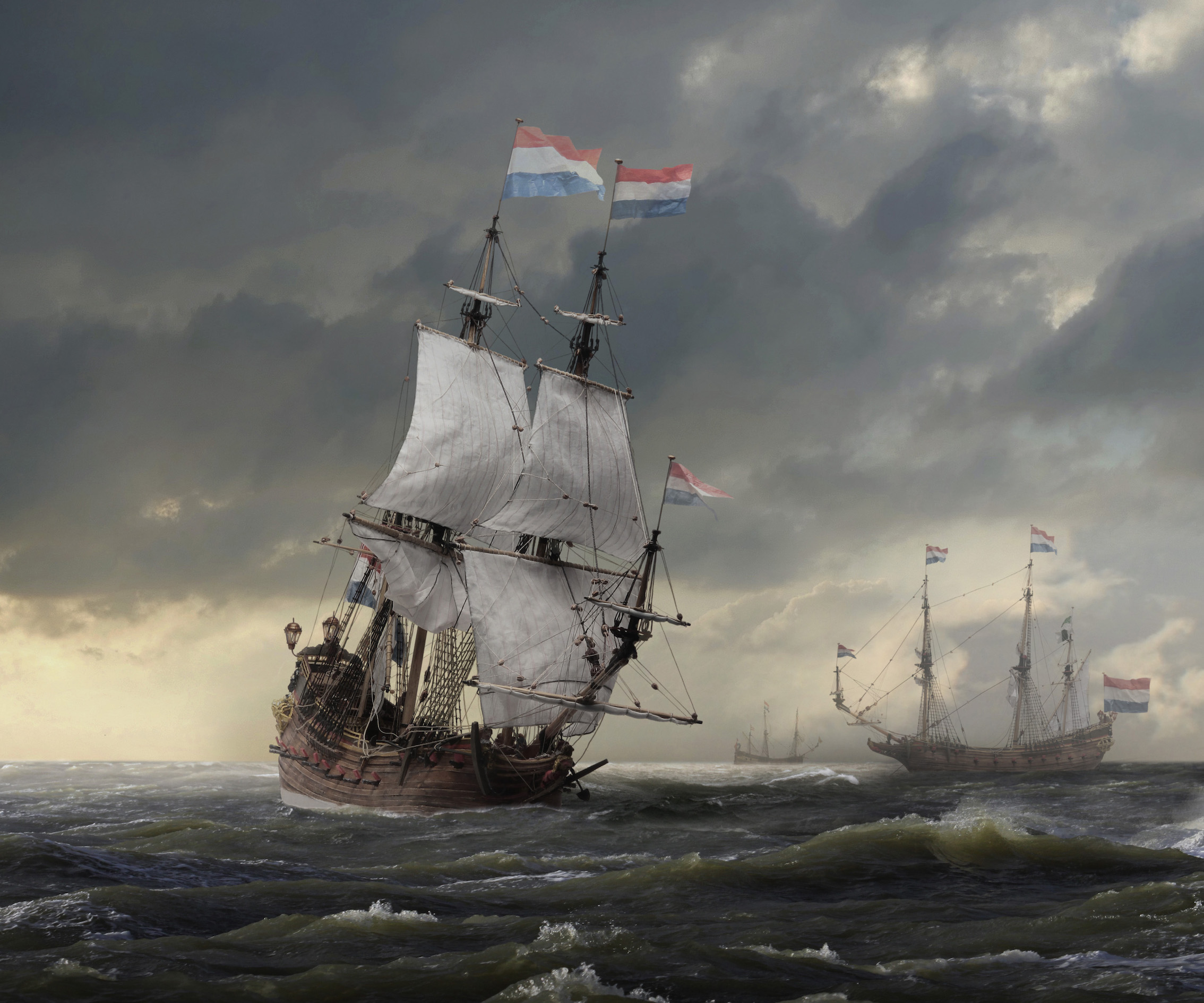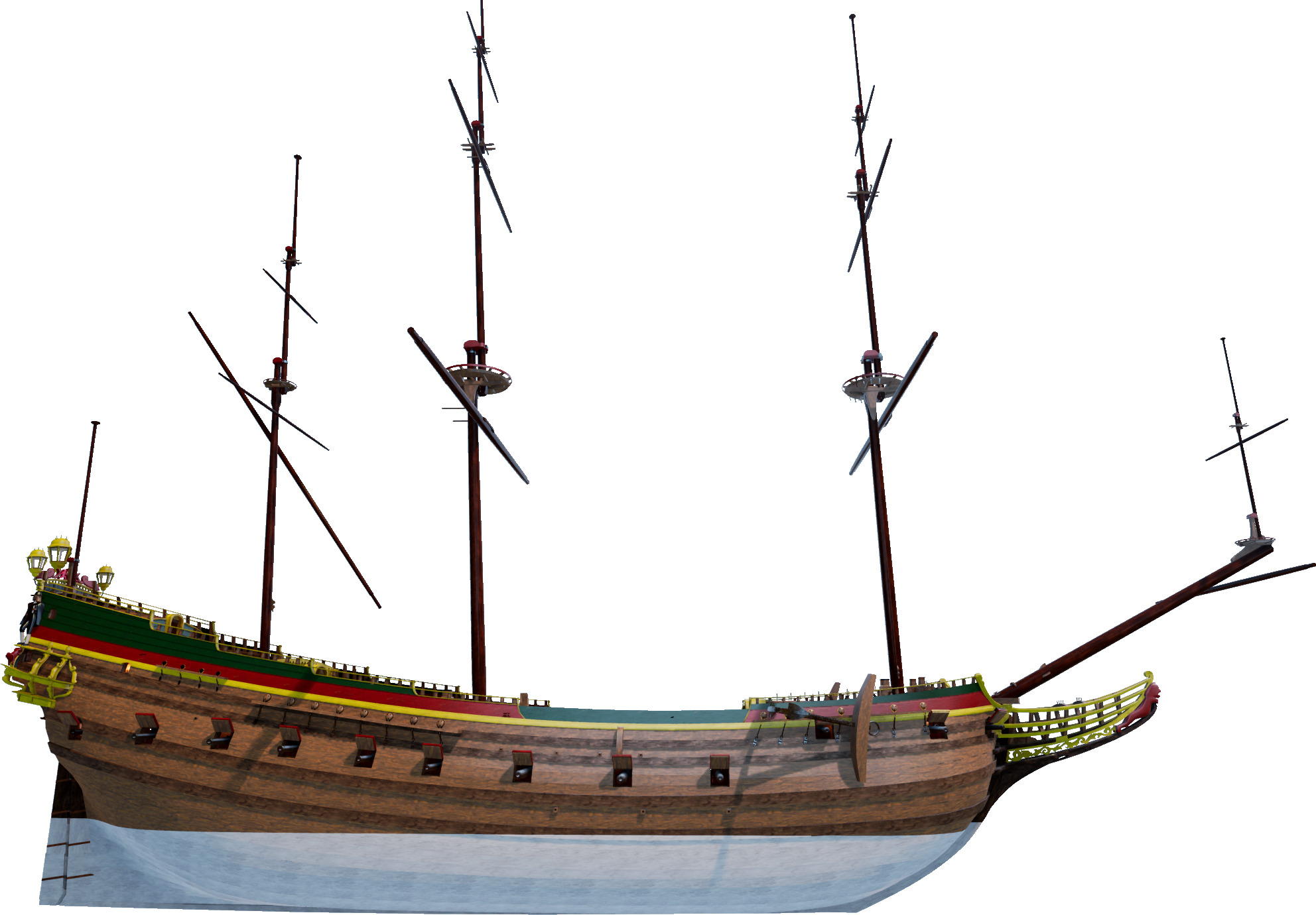
Reconnaissance
(Opens in new tab, feel free to read more while the program loads)
Although the design of this part of the Witsen Scheepsbouw program is strongly based on the game world, deliberately no attempt was made to make the interior appear emphatically 'real'. Masts and yards, for example, are made according to the measurements in Witsen's book, but they are not equipped with ropes and sails. What matters here is the construction of the ship and the way it was built. As a result, some parts seem somewhat stylized and too sharply defined. We have tried to provide the user with an idea of both the exterior and interior of the ship, without going beyond romantic parts of the interior, except where the measurements have been expressly given by Witsen.





